Disclosure: I was sent these books to review
free of charge in exchange for an honest review.
All opinions in this post are my own. I did not receive
any other compensation for this review. Some of the links are affiliate links where I will receive a small percentage of any purchases made through them at no cost to you. Thank you for supporting Crafty Moms Share!
Now that we are almost half way through December I am going to take the time to share the tea party we had in November. In November we looked at England. To do this we read some books, watched some DVDs from the library and also have some fun books to share with you. Some are for the little ones and some are for the older ones. We will start with learning a bit about England. It is a country in the United Kingdom. It's capital is London. Now I always have had a fondness to England since my maiden name is a town there. However I do not know a whole lot about the history of England besides little bits here and there. To learn a bit more we started with The Tudors: Kings, Queens, Scribes and Ferrets! by Marcia Williams.
This book has fun caricatures of the various Tudors and tells about their reign. There is also a ferret that adds little comments and tidbits. It starts with the Wars of the Roses and the Battle of Bosworth Field and how Henry Tudor ends up as King Henry VII. Christopher Columbus had asked Henry VII for funding, but Henry refused. Following Henry VII was his son, Hal, who was just eighteen when he became King Henry VIII.
King Henry VIII had a very expensive lifestyle and six wives, which caused the split with the Roman Catholic Church and the creation of the Church of England. This split the country in two as well. Some supported his first wife and stuck with the Catholic Church. By the time he married his last wife, Katherine, he was so fat he could barely walked and was carried in a special chair. Upon his death, his only son, Edward, became King Edward VI when he was nine. His uncle became Lord Protector and governed for Edward. After Edward's young death, his half sister, Mary became queen. She was Roman Catholic however. She tried to restore the Catholic Church in England and get rid of the protestants. She died and the crown passed to her half sister, Elizabeth. Although she liked beautiful clothes and jewels like her father, she did not inherit great wealth. The book goes into so many little details about the lives of the Tudors and the various events of their lives. The end of the book has information about some of the famous English people of this time like Sir Francis Drake, Sir Walter Raleigh and Shakespeare. The history is told in such a fun way that is more like a cartoon than a history book. It gives the interesting little facts of their history. I enjoyed this book a lot. Hazel got a little bored and had a bit of trouble following the people since she knew nothing about this history. This book is also recommended for slightly older children than Hazel, so she may enjoy it more in a year or two. She however did enjoy these DVDs to learn a bit about England and the culture there.
Now onto the tea in England. Tea has a long history in England. To learn a bit about the history I have been reading Tea: The Drink That Changed the World by Laura C. Martin.
I will be referring to this book for many of our looks at tea around the world. It provides the history of tea and its introduction to the various parts of the world. The history of tea trade is really quite interesting with wars, drugs and secrets filling the stories. This book does a lovely job of giving the history and sharing the various cultures views and methods of tea. Tea was first introduced to London by the Dutch in 1657. It was seen as a medicine however some coffeehouses (where usually men gathered) offered tea and coffee. In 1662 King Charles II married Princess Catherine of Braganza. Charles and Catherine were both confirmed tea drinkers. Catherine changed the view of tea as medicinal purposes only and taught English women to brew their tea to be a pleasurable drink. Charles gave the British East India Company a new charter that gave them a monopoly of trade and commerce with India and China. By 1717 there was a great interest in tea in England. Thomas Twining opened a teahouse next to his coffeehouse on the Strand. Twining was serving only tea and he allowed unaccompanied women to purchase tea. This was a first for this time. Women either sent their servants or had to be accompanied by a man to make purchases.
Anna Maria Stanhope, Duchess of Bedford, is said to have begun the idea of afternoon tea. She apparently felt hungry between the light lunch and the late dinner (often around 8 p.m.) and requested tea and small savory treats in the late afternoon. She enjoyed it so much she began to invite her friends to her afternoon tea at Belvoir Castle. She continued the practice when she returned to London in the fall. The custom caught on and by the late nineteenth century it was an established custom among the wealthy. Queen Victoria loved tea and afternoon tea parties. Afternoon tea receptions were introduced at Buckingham Palace in 1865.
Tea and afternoon tea spread to other classes. People throughout the country found tea a necessity. The wealthy class began to have tea etiquette. Ladies of fashion thought tea cups should be held by three fingers with the pinky in the air. This dates back to the Medieval times when the wealthy people would eat with only three fingers and everyone else would use all five.
As tea became more popular it was taxed more and really was very expensive. This started smuggling of tea into England. The high cost of tea made many people look for other alternatives of places to buy it. Grocers were often tempted to add in less expensive leaves to make the expensive Chinese tea last longer, so the quality of tea was not always the best. Some servants also sold the used tea leaves from the house and people would use them a second time. Sometimes they were sold as new by being tinted a bit.
Sir Thomas J. Lipton was born in Glasgow and at age fifteen came to New York. When he returned to Scotland he opened his first grocery store which became a chain of twenty stores. He realized there was money to be made in tea and bought up some plantations in Ceylon. The idea of a tea bag is credited to Thomas Sullivan of New York, however there were issues with the original tea bags--mostly not enough room to allow the leaves to spread out. In 1952 the Lipton Tea Company solved the issue with four sided bags.
This book has so much history and more in it and tells the stories about each region that tea has touched. I really enjoy reading it and recommend it to anyone who wants to learn more about the history of tea.
For our English tea party we had cucumber sandwiches, raspberry scones, and other fun pastries. We drank English Breakfast Tea. It was Hazel's first experience with black tea. I added sugar and milk for her and she loved it!! And of course an English tea party is often what we think of for a fancy tea party, so she was very excited for it. To learn about English Breakfast Tea and get instructions to brew it, we turn to a book we reviewed previously. The Art and Craft of Tea by Joseph Wesley Uhl shares a bit about tea and the various kinds of tea and a bit about the history.
A little tidbit about English tea drinking is that the more sugar added indicates lower social class. Even a teaspoon is suspect. This is another book I will continue to pull out for our various tea parties.
Another interesting look at tea in England is Tea with Jane Austen by Kim Wilson. This fun book takes a look at the historical culture of Jane Austen's lifetime as well as letters, historical records and her books themselves to see how tea mattered and was consumed by the Austens. This book gives a great history of the culture of England in Jane's lifetime. Throughout the book there are also recipes to try tea and the things that would accompany it in the various stories. The first chapter begins with breakfast. Breakfast was often served later in the morning and many people would get up and do things prior to breakfast. Breakfast was often an informal meal where people would read letters and newspapers and chat. Breakfast was often some form of tea and toast. The Austens had a special tea set for breakfast which was also common in this time. It was in the early 1700s that Queen Anne began the habit of drinking tea for her breakfast instead of the heavy alcoholic drinks that were being consumed prior.
Now as someone who loves to shop and who works in retail, I love the idea of tea with shopping. Many of the nicer stores would serve the women tea when they came in so shopping would be a bit more relaxing and social. Jane Austen bought the family's tea at Richard Twining's tea warehouse and their tea set at Wedgewood's showroom when she was in London. Many of her neighbors would also ask her to shop for them while she was in London since it was not always easy to make it to London to shop. In Jane's time tea would be bought in bulk since prepackaged tea wasn't produced until 1826.
This book has so much information packed into it. There is information about tea drinking from Austen's books as well as how Jane would know about some of it. Things like the navy ships having tea. The officers brought their own since it was not provided. The history of the time and what it might have been like for Jane to travel, drink tea and shop is all in there. Reading this book is like taking a step into the life of Jane Austen and seeing the world from a different time.
We really enjoyed learning a bit about England and especially tea in England. I have really enjoyed the books I shared with you and would love to have you check them out!! Many of my links are from Target. If you have a Target Red Card you can get free shipping on any order as well as 5% off!! I would appreciate if you are considering getting one, using this link (click banner below)!!
Now that we are almost half way through December I am going to take the time to share the tea party we had in November. In November we looked at England. To do this we read some books, watched some DVDs from the library and also have some fun books to share with you. Some are for the little ones and some are for the older ones. We will start with learning a bit about England. It is a country in the United Kingdom. It's capital is London. Now I always have had a fondness to England since my maiden name is a town there. However I do not know a whole lot about the history of England besides little bits here and there. To learn a bit more we started with The Tudors: Kings, Queens, Scribes and Ferrets! by Marcia Williams.
This book has fun caricatures of the various Tudors and tells about their reign. There is also a ferret that adds little comments and tidbits. It starts with the Wars of the Roses and the Battle of Bosworth Field and how Henry Tudor ends up as King Henry VII. Christopher Columbus had asked Henry VII for funding, but Henry refused. Following Henry VII was his son, Hal, who was just eighteen when he became King Henry VIII.
 |
| Source |
Now onto the tea in England. Tea has a long history in England. To learn a bit about the history I have been reading Tea: The Drink That Changed the World by Laura C. Martin.
I will be referring to this book for many of our looks at tea around the world. It provides the history of tea and its introduction to the various parts of the world. The history of tea trade is really quite interesting with wars, drugs and secrets filling the stories. This book does a lovely job of giving the history and sharing the various cultures views and methods of tea. Tea was first introduced to London by the Dutch in 1657. It was seen as a medicine however some coffeehouses (where usually men gathered) offered tea and coffee. In 1662 King Charles II married Princess Catherine of Braganza. Charles and Catherine were both confirmed tea drinkers. Catherine changed the view of tea as medicinal purposes only and taught English women to brew their tea to be a pleasurable drink. Charles gave the British East India Company a new charter that gave them a monopoly of trade and commerce with India and China. By 1717 there was a great interest in tea in England. Thomas Twining opened a teahouse next to his coffeehouse on the Strand. Twining was serving only tea and he allowed unaccompanied women to purchase tea. This was a first for this time. Women either sent their servants or had to be accompanied by a man to make purchases.
 |
| Interior of Twinings Strand Heritage Shop, London By Jacklee. (Own work.) [CC BY-SA 3.0], via Wikimedia Commons |
Anna Maria Stanhope, Duchess of Bedford, is said to have begun the idea of afternoon tea. She apparently felt hungry between the light lunch and the late dinner (often around 8 p.m.) and requested tea and small savory treats in the late afternoon. She enjoyed it so much she began to invite her friends to her afternoon tea at Belvoir Castle. She continued the practice when she returned to London in the fall. The custom caught on and by the late nineteenth century it was an established custom among the wealthy. Queen Victoria loved tea and afternoon tea parties. Afternoon tea receptions were introduced at Buckingham Palace in 1865.
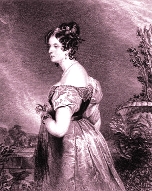 |
| Anna Maria Stanhope By Giano at en.wikipedia (Transferred from en.wikipedia) [Public domain], from Wikimedia Commons |
Tea and afternoon tea spread to other classes. People throughout the country found tea a necessity. The wealthy class began to have tea etiquette. Ladies of fashion thought tea cups should be held by three fingers with the pinky in the air. This dates back to the Medieval times when the wealthy people would eat with only three fingers and everyone else would use all five.
As tea became more popular it was taxed more and really was very expensive. This started smuggling of tea into England. The high cost of tea made many people look for other alternatives of places to buy it. Grocers were often tempted to add in less expensive leaves to make the expensive Chinese tea last longer, so the quality of tea was not always the best. Some servants also sold the used tea leaves from the house and people would use them a second time. Sometimes they were sold as new by being tinted a bit.
 |
| Source |
Sir Thomas J. Lipton was born in Glasgow and at age fifteen came to New York. When he returned to Scotland he opened his first grocery store which became a chain of twenty stores. He realized there was money to be made in tea and bought up some plantations in Ceylon. The idea of a tea bag is credited to Thomas Sullivan of New York, however there were issues with the original tea bags--mostly not enough room to allow the leaves to spread out. In 1952 the Lipton Tea Company solved the issue with four sided bags.
This book has so much history and more in it and tells the stories about each region that tea has touched. I really enjoy reading it and recommend it to anyone who wants to learn more about the history of tea.
For our English tea party we had cucumber sandwiches, raspberry scones, and other fun pastries. We drank English Breakfast Tea. It was Hazel's first experience with black tea. I added sugar and milk for her and she loved it!! And of course an English tea party is often what we think of for a fancy tea party, so she was very excited for it. To learn about English Breakfast Tea and get instructions to brew it, we turn to a book we reviewed previously. The Art and Craft of Tea by Joseph Wesley Uhl shares a bit about tea and the various kinds of tea and a bit about the history.
A little tidbit about English tea drinking is that the more sugar added indicates lower social class. Even a teaspoon is suspect. This is another book I will continue to pull out for our various tea parties.
Another interesting look at tea in England is Tea with Jane Austen by Kim Wilson. This fun book takes a look at the historical culture of Jane Austen's lifetime as well as letters, historical records and her books themselves to see how tea mattered and was consumed by the Austens. This book gives a great history of the culture of England in Jane's lifetime. Throughout the book there are also recipes to try tea and the things that would accompany it in the various stories. The first chapter begins with breakfast. Breakfast was often served later in the morning and many people would get up and do things prior to breakfast. Breakfast was often an informal meal where people would read letters and newspapers and chat. Breakfast was often some form of tea and toast. The Austens had a special tea set for breakfast which was also common in this time. It was in the early 1700s that Queen Anne began the habit of drinking tea for her breakfast instead of the heavy alcoholic drinks that were being consumed prior.
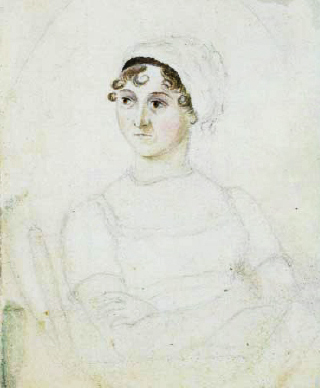 | |
| Sketch of Jane Austen by her sister, Casandra By Cassandra Austen (1773-1845) [Public domain], via Wikimedia Commons |
Now as someone who loves to shop and who works in retail, I love the idea of tea with shopping. Many of the nicer stores would serve the women tea when they came in so shopping would be a bit more relaxing and social. Jane Austen bought the family's tea at Richard Twining's tea warehouse and their tea set at Wedgewood's showroom when she was in London. Many of her neighbors would also ask her to shop for them while she was in London since it was not always easy to make it to London to shop. In Jane's time tea would be bought in bulk since prepackaged tea wasn't produced until 1826.
 |
| Teapot by Josiah Wedgewood and Sons By Daderot (Own work) [CC0], via Wikimedia Commons |
This book has so much information packed into it. There is information about tea drinking from Austen's books as well as how Jane would know about some of it. Things like the navy ships having tea. The officers brought their own since it was not provided. The history of the time and what it might have been like for Jane to travel, drink tea and shop is all in there. Reading this book is like taking a step into the life of Jane Austen and seeing the world from a different time.
We really enjoyed learning a bit about England and especially tea in England. I have really enjoyed the books I shared with you and would love to have you check them out!! Many of my links are from Target. If you have a Target Red Card you can get free shipping on any order as well as 5% off!! I would appreciate if you are considering getting one, using this link (click banner below)!!


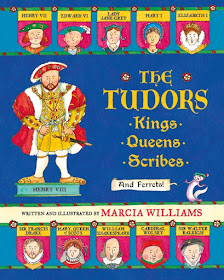

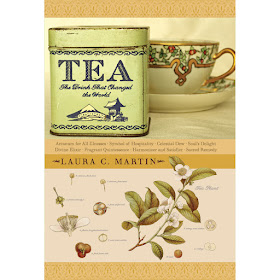

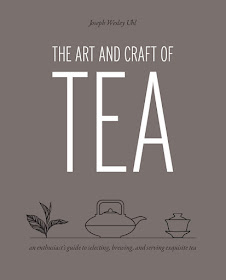
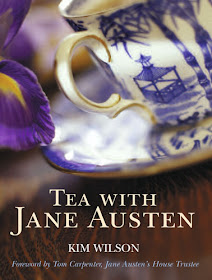
No comments:
Post a Comment
I love to hear your comments and ideas. Thank you for reading and contributing!